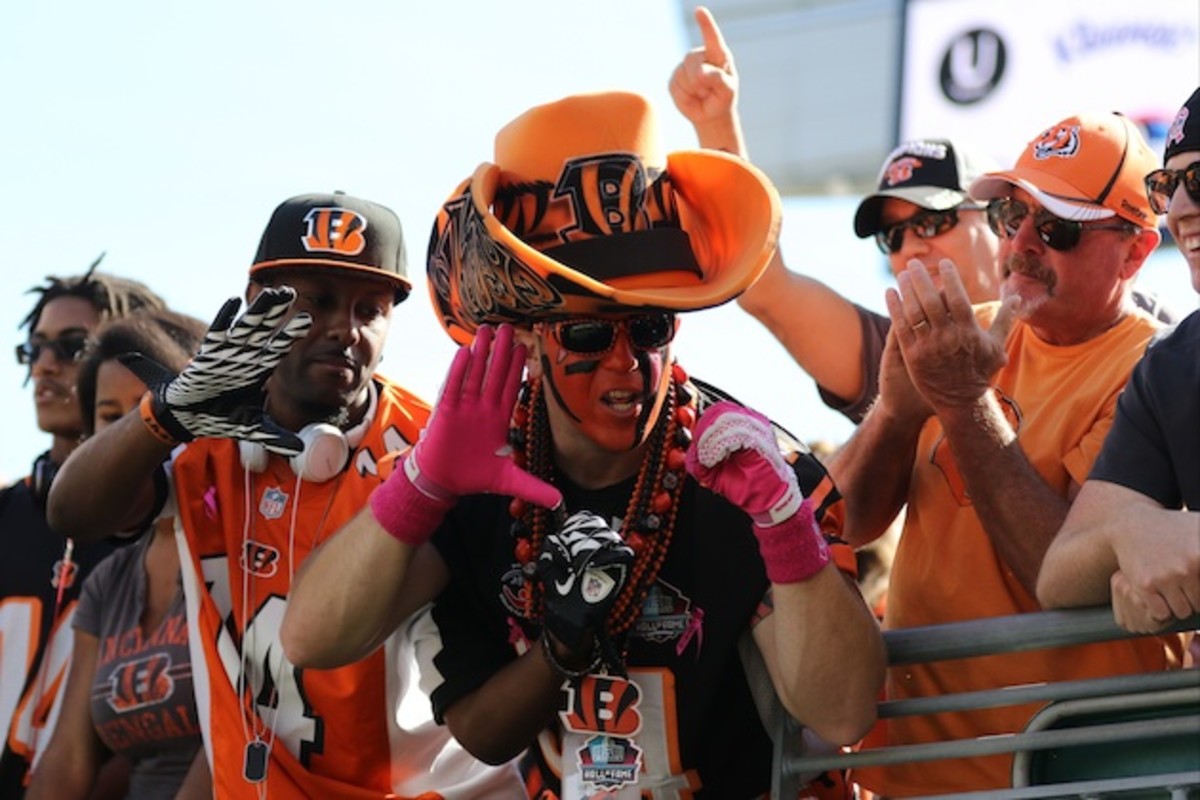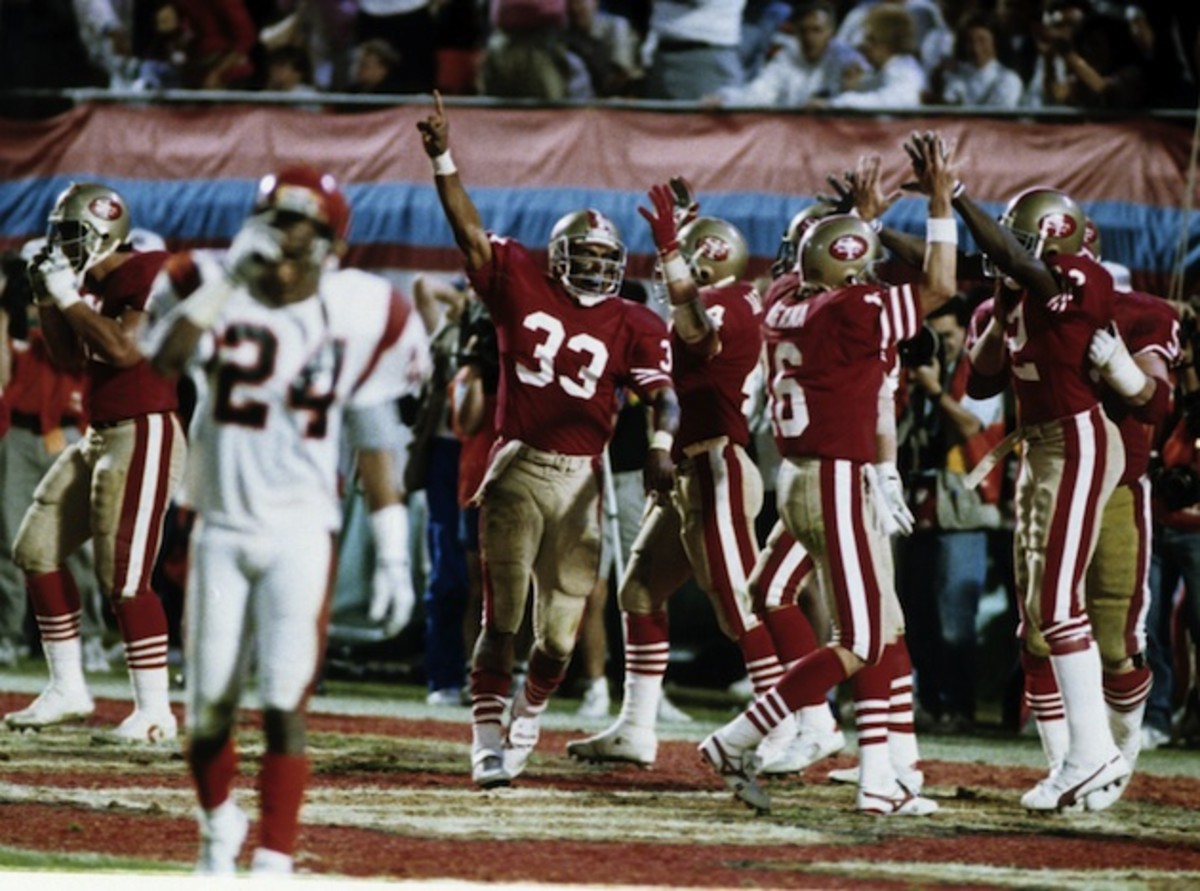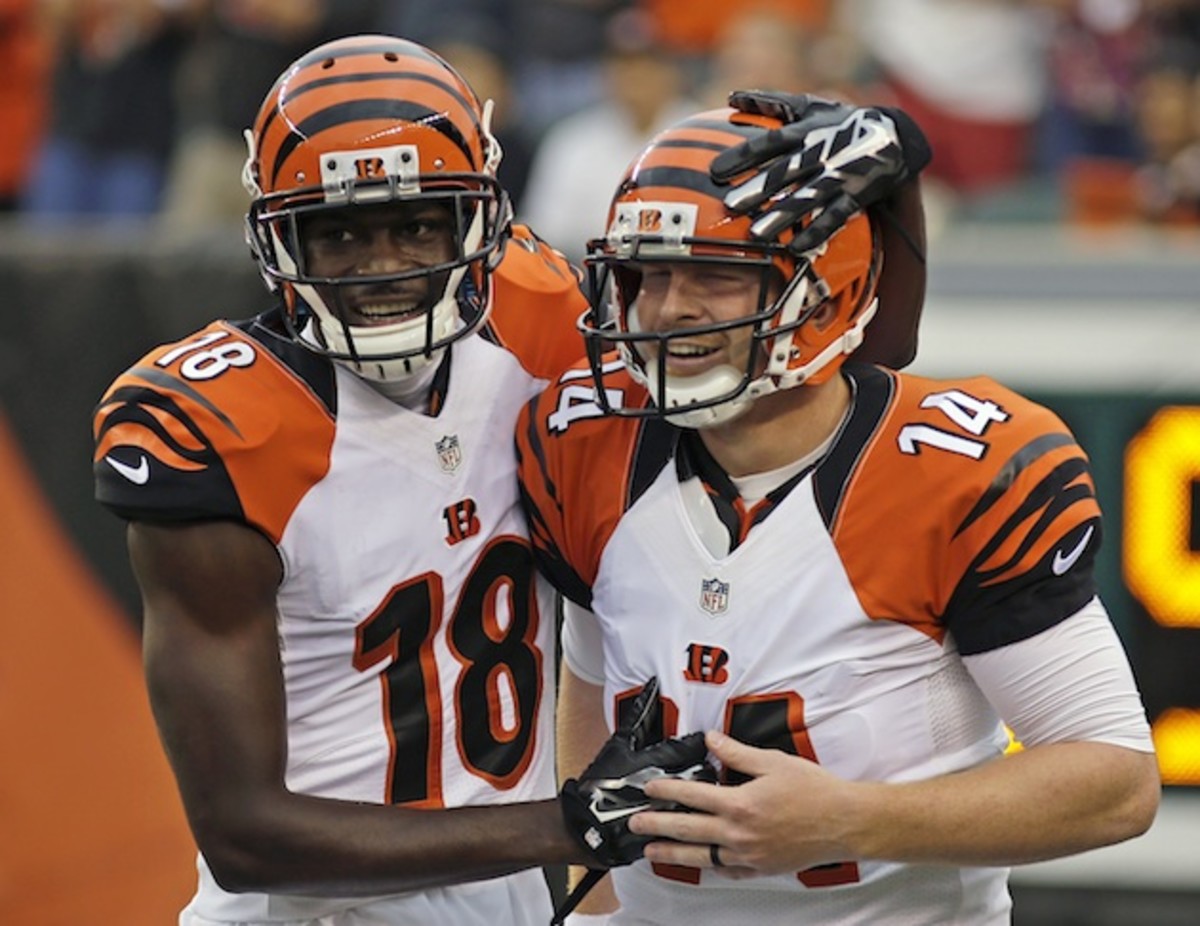Bengals' success rewarding a far-flung fanbase for wideout A.J. Green

In a hole-in-the-wall sports bar in midtown Omaha, Neb., some 700-plus miles from the digitally projected stadium they are now glued to, about a dozen not-quite-sober Cincinnati Bengals fans are howling at the team’s oft-maligned quarterback, Andy Dalton.
“Get your head out of your ass,” one of them says.
“We aren’t going far with this squad,” says another.
If there’s any one preconceived notion about Nebraskans that is entirely accurate, it’s this: They love football. And though that sentiment doesn’t necessarily make them unique among Americans, Cornhuskers have a unique tendency to lay blame for any and all soul-crushing fourth-quarter decisions and last-second defeats squarely at the feet of the quarterback.
Unsportsmanlike conduct penalty on the cornerback? Blame it on the QB! Chip-shot field goal for the win sails wide right? Why didn’t the QB hit that slant pattern back in the first quarter?
With no professional franchise within 180 miles in any direction, fans from Nebraska cling to their favorite teams like blankets; draping their squads’ respective colors tightly around their bodies each week and coalescing into a vibrant — yet somehow wholly overlooked — community of far-away onlookers.
Omaha is hardly exclusive in its pro-sports barrenness. In an area teeming with transplant fans, most are content to invest their resources in the University of Nebraska-Lincoln’s football program, which, in 1995, had what many deemed the best single season in the history of college football. Although the team hasn’t won a conference championship — let alone a national title — in more than a decade, on fall Saturdays, Memorial Stadium swells to become the third-largest city in the state. (The Cornhuskers have played to sellout crowds every week since 1962.)

As such, without a professional football team to spark the office water-cooler talk, the state harbors NFL loyalists from elsewhere—those who grew up in Los Angeles or New York, only to set down roots in the Midwest; the folks who left the sprawl of Boston to study in Nebraska and never left; or those whose parents grew up watching the Browns, and feel drawn to a sense of inter-generational masochism. When your preferred team lies on another coast, in another city, or far enough away to where a “day trip” simply isn’t feasible, one’s strength of commitment can easily be tested.
As in any U.S. city, there are plenty of bandwagon fans. But here, such Red Zone carpetbaggers are heavily outweighed by the devoted lifers—those who’ve had to put forth considerable effort in order to maintain, nay strengthen, their allegiances.
Such are the folks I find transfixed to the bar-room screens on this Sunday afternoon. Two of the patrons—Jack and Thomas—hail from Norwood, while Terry grew up near White Oak. All three have been coming here for the past few years.
“Can’t remember how long it’s been, but it sure feels like a while,” Terry mutters.
The majority of Nebraskans cheer for the Kansas City Chiefs and Royals, the professional franchises that are closest in proximity, but here, at this bar on Sundays, there’s only one team for which the orange-clad customers are bellowing. And they’re all wearing the same jersey: the No. 18 of A.J. Green, who many consider the true linchpin of the Cincinnati offense.
"I never went in knowing that I was going to have four straight 1,000-yard seasons," Green said. "But I felt like if I worked as hard as I did in Georgia, and [continued] to get better each week, the sky was the limit for me. But I've got a lot of work to get done, and I've got to still keep getting better each week and each year."
Like the self-prided red-blooded Nebraskans around which these Bengals fans grew up, Green represents not the quintessential big-city athlete, but the salt-of-the-Earth kid from rural South Carolina—a phenom who dug his way out of humble roots and into the nation’s greater football conscience. Raised in rural Ridgeville (population: 1,992, as of 2013), Green grew up loving football and juggling, a hobby the beastly wideout continues to hone.
To be fair, Dalton has garnered quite a bit of exposure in recent weeks — attention which isn’t altogether unfounded. He, like Green, also hails from a small town. More crucial still, the fifth-year starter has elevated his play by just about every metric, ranking second in passing yards, tied for second in touchdowns and second in quarterback rating through the season’s first six weeks. After throwing a career-high 17 interceptions in 2014, “Big Red” has tossed just two picks this season.
Given Dalton’s play — and, more importantly, the Bengals’ 6–0 record — it’s quite a sight to see a bunch of QB-loving Omaha diehards pledging their polyester-and-cotton allegiance to a wide receiver. Then again, it’s always been the case that, as Green goes, so goes the arm that feeds him — a fact both players have acknowledged, albeit tacitly, in public.
“We came in together and that is the great thing for me and him,” Green told CBS Sports in 2014. “I know he’s my guy. I don’t want any other quarterback throwing me the ball. I think he feels the same way about me.”
The man in the gray throwback jersey across from me has just downed his pint of Busch Light when Green takes a Dalton dart 80 yards for a score. Raising his arms in rapture towards the ceiling fan, Throwback Guy accidentally flips his plate of tepid french fries. Each time Green is targeted, the bar goes pin-drop silent.
“Nobody gets us excited like A.J.,” he tells me. “We all just get this rush watching him play.”
I say nothing about the fry sticking to his jersey number.
Before Green and Dalton arrived in 2011, the Bengals had qualified for the postseason just three times in two decades, with two of those appearances ending in a wild-card loss. Cincinnati has cracked the playoffs in each of the four years since, winning an average of 10 games per season. Last season’s run ended in yet another wild-card defeat against the surging Indianapolis Colts. After suffering a concussion in the final week of the regular season, Green — by then one of the league’s unquestioned top-ten receivers — was forced to the sidelines.

In the 47-year history of the franchise, the Bengals have started 4–0 just four times. The last time they started 6–0, they made it to the Super Bowl, only to lose on a devastating last-minute drive to Joe Montana and the San Francisco 49ers. Perched alone atop the AFC North, they’re in prime shape to qualify for the playoffs once again. Green, owing to equal parts length (6'4", with a 6'6" wingspan) and speed (4.5 in the 40-yard-dash), ranks sixth in the league in receiving yards (531) — a stat made all the more impressive when you consider he ranks 20th in total targets.
While elite wide receivers across the league inked sparkling contracts over the offseason — Julio Jones, Demaryius Thomas, and Dez Bryant, just to name a few — Green merely watched as the headlines scrolled by.
“We knew he’d stay quiet,” says a man wearing shorts so short his jersey takes the form of a bib. “That’s just the type of guy A.J. has always been.”
Somehow, the man’s instinct feels like the right one: With the media horde haranguing him for not requesting a much-deserved pay increase, Green nevertheless remained ambivalent and self-effacing. After all, the perennial Pro-Bowler was soft-spoken long before he ever became an elite NFL receiver, long before his Georgia teammates nicknamed him Hollywood for his mind-bending one-handed grabs against some of the toughest defenses in the country.
Finally, in September, Green inked a four-year, $60 million extension, putting him square among the league’s highest-paid receivers.
“Man, it feels great,” Green said. “Now I can go out there and just play football. I don’t have to worry about when it’s going to get done and, ‘Do I have to pull out this year?’ and, you know, talking to my agent every day. Now I just get to focus on football from here on out. I’m just blessed and humbled that the Bengals got this done.”

On this autumn Sunday, that sense of forward-looking optimism has become part and parcel with the Bengals-fan experience.
“With A.J. locked up for a few more years, why can’t this be our year?” Throwback Guy says as fans cheer in the background. Sure enough, Green logs another reception seconds later.
Since Green’s rookie season, the Bengals are 15–6 when their top wideout amasses more than 100 receiving yards. The four straight 1,000-yard seasons to begin his career — campaigns which all ended in Pro Bowl bids — are topped only by Randy Moss’ six.
As far as where his team is headed this year, Green contends they’re sticking to that age-old football cliche: one week at a time.
“We’ve got a lot of work to do,” he said. “And this is a new week, so we’ll see what happens on Sunday. One game at a time.”
Back in the bar, the Bengals are driving furiously towards the end zone of their longtime nemesis (and divisional foil), the Baltimore Ravens. Green has already amassed more than 200 yards, and will soon finish with a career-high 227 on 10 receptions. A woman standing nearby, also donning Green’s jersey, turns to me.
“Think it’s going to A.J.?” she asks, already knowing the answer.
Seconds later, there it is: a spiral cast aloft to the back corner of the end zone. As he so often does, Green raises his arms and hauls it in with ridiculous ease — a video-game terror rendered in 4-D reality. Dalton bounds toward frenetically towards his receiver, smacking him on the helmet before the two jog back to the sidelines, another win beneath their belts.
“A.J., man,” Throwback Guy says, already well into his second pint of Busch. “He just does this all the time and each time is more impressive than the one before.”
True as it is, and sheer as that ever-upward trajectory must feel for these long-beleaguered Bengals faithful, there’s no sense in wishing Green would grasp how great he’s been. Because whether it's a Dalton dart or a juggling pin at its apex, he’s already on to the next. And a loyal group of Nebraskans are watching.

